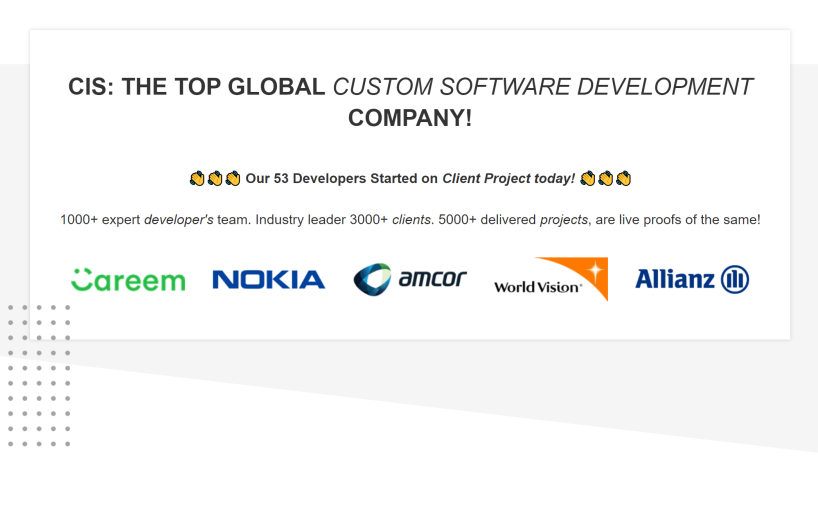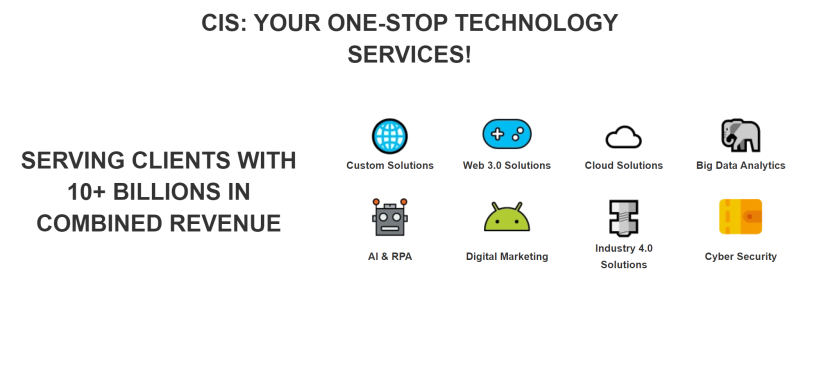Maximizing ROI: The Cost and Benefits of Adopting Sharepoint Integrations With Microsoft Flow for Your Business
- SharePoint integrations with Microsoft Flow - Detailed Analysis by Enterprise Solutions Experts
Request A Free Consultation - Why Use SharePoint Integrations With Microsoft Flow



Why Mid-size Companies and Enterprises needs SharePoint Integrations With Microsoft Flow:
SharePoint integrations with Microsoft Flow enable mid-size companies and enterprises to automate processes, streamline workflows, and improve collaboration. By integrating SharePoint with Microsoft Flow, businesses can create automated workflows that connect different applications and services such as Office 365, Dynamics CRM, Salesforce, Dropbox etc. This helps in eliminating manual tasks associated with data entry or document sharing by automating the process. Additionally it also enables users to easily access documents from multiple locations across the organization without having to manually transfer them between systems. Furthermore this integration allows for better collaboration within teams by providing an easy way for members to share files securely with each other while ensuring compliance regulations are met.
Benefits of using SharePoint Integrations With Microsoft Flow in Mid-size companies and Enterprises:
1. Automate business processes:
SharePoint integration with Microsoft Flow allows users to automate their business processes, such as document approval and content management. This helps mid-size companies and enterprises save time and money by streamlining their workflows.
2. Increase collaboration:
By integrating SharePoint with Microsoft Flow, teams can create automated workflows that allow them to collaborate more effectively on tasks and projects. This increases efficiency across the organization while reducing confusion among team members.
3. Improve data security:
With SharePoint integration, businesses can ensure that sensitive information is kept secure by setting up access control lists (ACLs) within Microsoft Flow for each user or group of users who need access to specific documents or folders in SharePoint.
4. Enhance visibility into operations:
Integrating SharePoint with Microsoft Flow allows businesses to get a better understanding of how their operations are running at any given time through real-time reporting tools built into the platform's dashboard interface. This gives mid-size companies and enterprises greater insight into what needs improvement so they can make more informed decisions about their workflow processes going forwardDetailed Features of SharePoint Integrations With Microsoft Flow for Mid-size companies and Enterprises:
1. Automated Workflows:
SharePoint integration with Microsoft Flow allows organizations to create automated workflows that can be triggered by events in SharePoint, such as changes to documents or new items added to lists. This enables organizations to quickly respond and take action on tasks without manual intervention.
2. Document Collaboration and Management:
Organizations can leverage the power of Office 365 and SharePoint's document management features when integrating with Microsoft Flow. With this integration, users can easily collaborate on documents stored in SharePoint, review them for approval, track changes made over time and more - all within a single platform.
3. Customizable Forms:
By connecting forms created in PowerApps with data from a connected list or library in SharePoint, businesses can create custom forms that capture relevant information from their users efficiently and accurately - all while leveraging the security of an enterprise-grade system like Office 365/Sharepoint.
4. Real-Time Data Insights:
Through its real-time analytics capabilities, Microsoft Flow helps mid-size companies and enterprises gain insights into how their processes are working by providing visibility into performance metrics like response times or task completion rates across multiple systems including those integrated with SharePoint.
5 .Integration with Third Party Applications :
Integrating third party applications such as Salesforce or Dynamics CRM is also possible thanks to the flexibility offered by Microsoft Flow when it comes to connecting different platforms together via APIs (Application Programming Interfaces). This allows organizations to streamline processes even further by bringing together data from disparate sources into one place for easier analysis and decision makingRequest A Quote - Why Use SharePoint Integrations With Microsoft Flow
Who are the Users of SharePoint Integrations With Microsoft Flow:
Customers who use SharePoint integrations with Microsoft Flow are typically organizations that rely on the Microsoft Office suite of products and services. This includes businesses, educational institutions, government agencies, and non-profits.
How to ensure Data Security and Compliance with SharePoint Integrations With Microsoft Flow:
1. Implement a secure authentication system:
Utilize a multi-factor authentication system for all users accessing SharePoint and Flow. This will help to ensure that only authorized personnel are able to access the data stored in both systems.
2. Encrypt your data:
Make sure that all sensitive information is encrypted when it is transferred between SharePoint and Flow, as well as when it is stored within either platform.
3. Follow security best practices:
Ensure that all users have strong passwords, use up-to-date antivirus software, and follow other security best practices such as not sharing login credentials or leaving devices unlocked while unattended.
4. Monitor user activity:
Use tools like audit logs to monitor user activity on both platforms so you can quickly detect any suspicious behavior or unauthorized access attempts.
5. Stay up to date with compliance regulations:
Be aware of any changes in relevant compliance regulations (e.g., GDPR) so you can make sure your organization stays compliant with them at all times when using SharePoint and Flow togetherHow SharePoint Integrations With Microsoft Flow can increase organization Productivity, Agility, and Profitability:
SharePoint integrations with Microsoft Flow can help increase organization productivity, agility, and profitability by streamlining workflows and automating repetitive tasks. By connecting SharePoint to other applications such as Outlook or Teams, organizations can quickly create automated processes that save time and resources. This automation enables teams to be more agile in their decision making process while reducing the need for manual labor. Additionally, automating processes helps reduce costs associated with human error or inefficient operations which leads to increased profitability.
Request A Quote - Why Use SharePoint Integrations With Microsoft Flow
How to Measure KPIs and increase Benefits of implementing SharePoint Integrations With Microsoft Flow in Mid-size companies and Enterprises:
1. Establish KPIs:
The first step to measure the benefits of SharePoint integration with Microsoft Flow is to establish key performance indicators (KPIs). These could include metrics such as time saved, cost savings, improved accuracy and efficiency, etc.
2. Track Progress:
Once you have established your KPIs, track progress by measuring them regularly against pre-implementation baselines. This will help you identify areas where improvements can be made or additional features added that may further increase the benefit of using SharePoint integrations with Microsoft Flow in mid-size companies and enterprises.
3. Assess Benefits:
Periodically assess the benefits derived from implementing SharePoint integrations with Microsoft Flow in mid-size companies and enterprises by tracking changes in productivity levels over time and comparing those results to baseline data collected prior to implementation.
4. Leverage Data Insights:
Use data insights generated from tracking KPIs to improve existing processes or create new ones that leverage the capabilities of SharePoint integrations with Microsoft Flow more effectively for greater business value creation at a lower cost point than traditional methods would require.
5. Monitor Usage Patterns:
Keep an eye on usage patterns so that any issues related to adoption or usability can be addressed quickly before they become major problems down the road for your customer base or employee base utilizing this technology solution within their organization's IT infrastructure environment(s).How SharePoint Integrations With Microsoft Flow can increase Employee Morale in your organization:
SharePoint integrations with Microsoft Flow can help to increase organization employee morale by streamlining and automating tedious manual tasks. This automation allows employees to focus on more meaningful tasks, which can lead to increased job satisfaction. Additionally, SharePoint integrations with Microsoft Flow allow for improved collaboration between teams and departments, creating a sense of unity within the organization and fostering better communication among all employees. Finally, flow-based solutions are often easier and faster than traditional methods, leading to greater efficiency in completing organizational goals which can be an additional source of motivation for employees.
How SharePoint Integrations With Microsoft Flow is Better than its Competitors:
SharePoint integrations with Microsoft Flow are better than its competitors because they provide more powerful and flexible automation capabilities. With Microsoft Flow, you can create automated workflows that connect to multiple applications and services without the need for custom code or complex scripting. This makes it easier to build flows that span across different systems, enabling you to automate processes such as document approvals, data synchronization, notifications and alerts. Additionally, SharePoint integration allows users to access all of their documents in one place from any device making collaboration much simpler.
Request A Quote - Why Use SharePoint Integrations With Microsoft Flow
Cost to Develop & Implemention of SharePoint Integrations With Microsoft Flow:
The cost to develop and deploy SharePoint integrations with Microsoft Flow will vary depending on the complexity of the project. Generally, it can range from a few hundred dollars to several thousand dollars. Additionally, many organizations choose to use third-party services or platforms that offer integration solutions for a monthly fee.
Why outsourcing implementation services for SharePoint Integrations With Microsoft Flow is better for Mid-size companies and Enterprises:
Outsourcing implementation services for SharePoint integrations with Microsoft Flow can be beneficial for mid-size companies and enterprises, as it allows them to quickly and cost-effectively integrate their existing systems with the latest cloud technologies. By outsourcing these services, businesses can benefit from expert advice on integrating their current architecture with the new technology in order to maximize its potential. Additionally, they can take advantage of experienced professionals who are familiar with the platform and understand how to best implement it within an organization's IT infrastructure. Outsourcing also eliminates any need for additional training or resources that may be required when attempting to implement such a complex system internally.
Request A Quote - Why Use SharePoint Integrations With Microsoft Flow


